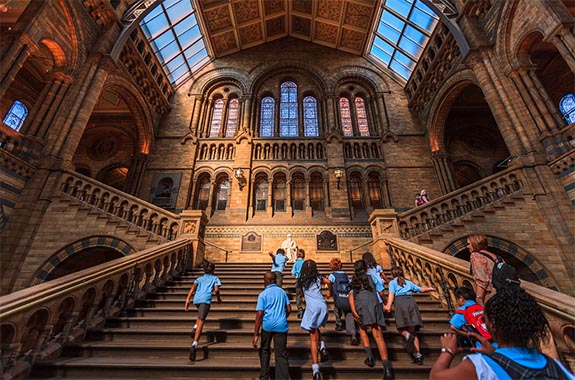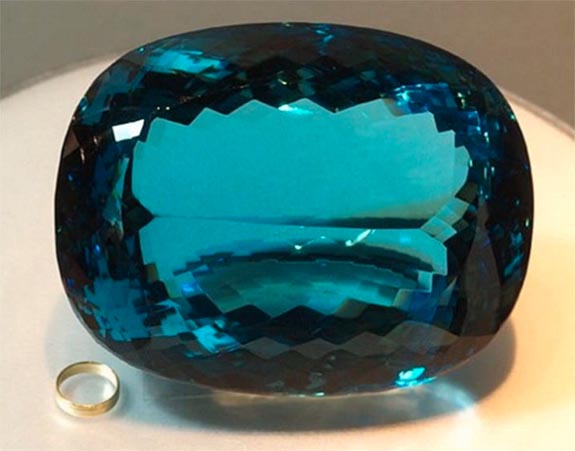
Despite the fanfare connected with its newest high-profile exhibit, the Natural History Museum has yet to publish a photo of the blue gemstone.
In fact, The Ostro Stone has been largely under the radar during the 30 years since the Swiss Blue gem was discovered in the Brazilian rainforest by explorer and holocaust survivor Max Ostro.
Ostro founded Ostro Minerals in 1960, and his company grew to be a leading producer of blue topaz. Ostro is credited with refining the nomenclature used to describe the various colors of topaz. For instance, he coined the term "London Blue" and "Swiss Blue." The founder passed away in 2010.
His son, Maurice Ostro, who is also a precious gem expert and entrepreneur, generously donated his dad's amazing find to the Natural History Museum. The gem is said to be worth "millions of dollars."

While we wait until its unveiling to get a look at The Ostro Stone, we can show you the previous vivid blue topaz record-holder — "Marbella."
Weighing 8,225 carats, the grapefruit-sized specimen sourced in Minas Gerais, Brazil, was purchased by the Spanish government in 2000 and was intended to be added to its world renowned Programa Royal Collections museum.
Marbella was originally called “Topaz Azul” (Blue Topaz, in Spanish), but was renamed “Marbella” in 2010 upon the special request of the town of Marbella’s Mayoress and local dignitaries, who believed a local exhibit of the gem could help raise the international profile of the Costa del Sol destination, boost the economy and encourage cultural development.
Marbella has been billed as "the world’s largest faceted blue topaz," but The Ostro Stone clearly outweighs it by 1,606 carats. Both stones are ovals and both stones boast a vivid blue color. The only significant difference, we're guessing, is their size.
London's Natural History Museum will officially unveil The Ostro Stone during a special reception on October 6.
Credits: London's Natural History Museum by Chiugoran (Own work) [CC BY-SA 3.0], via Wikimedia Commons; Marbella topaz (uncredited).
No comments:
Post a Comment